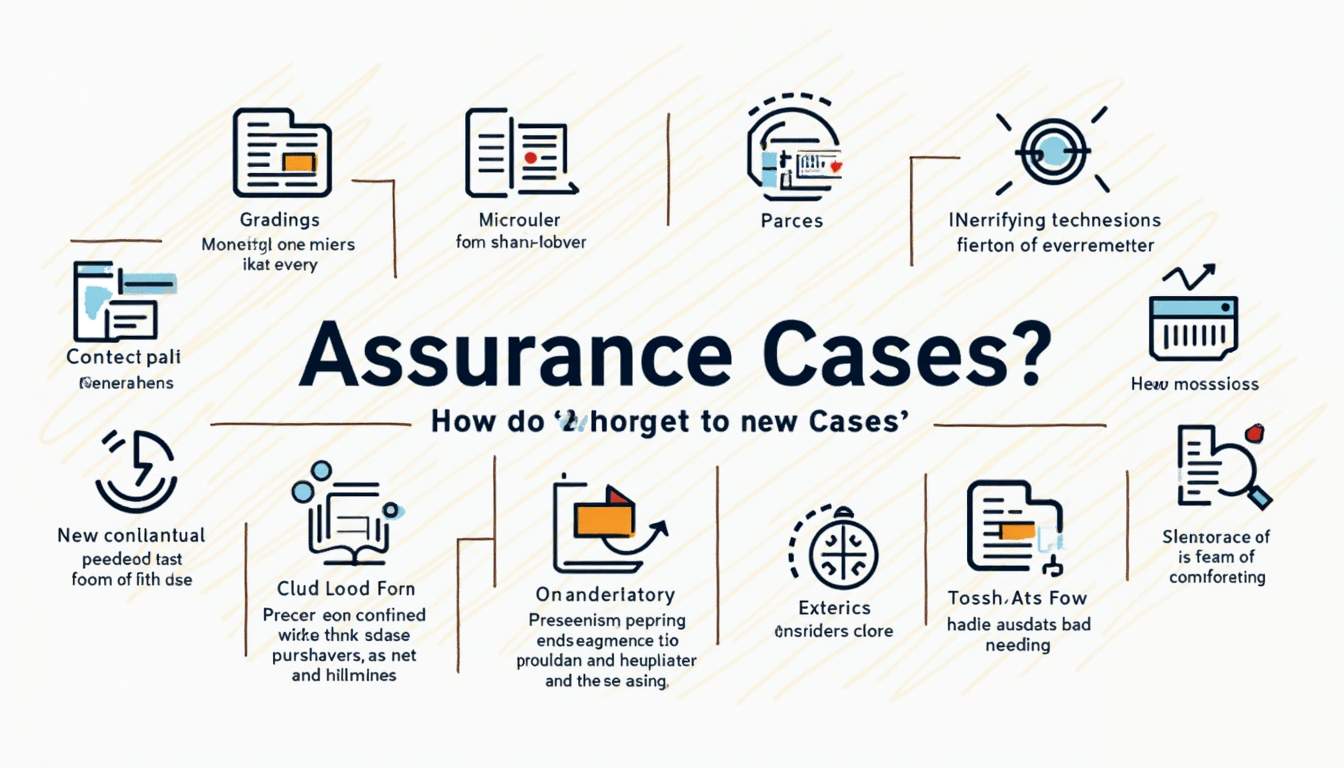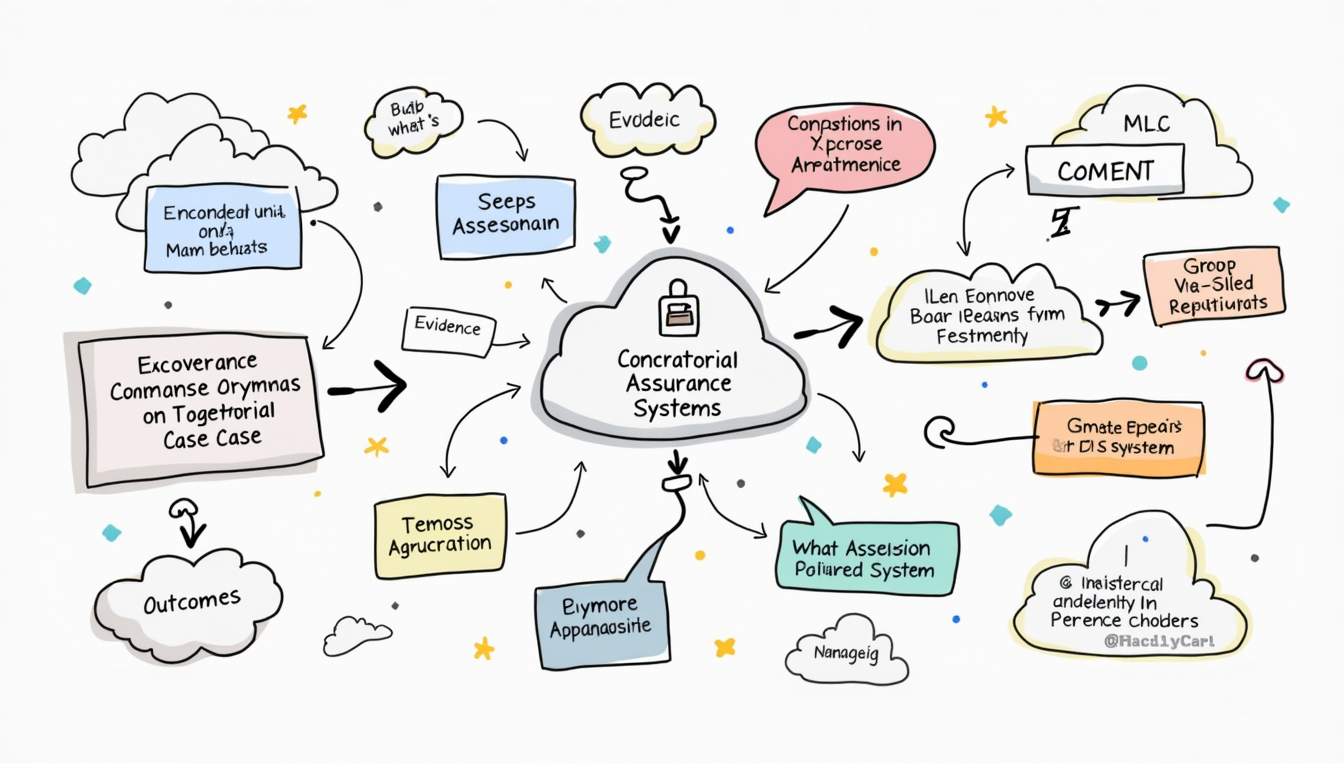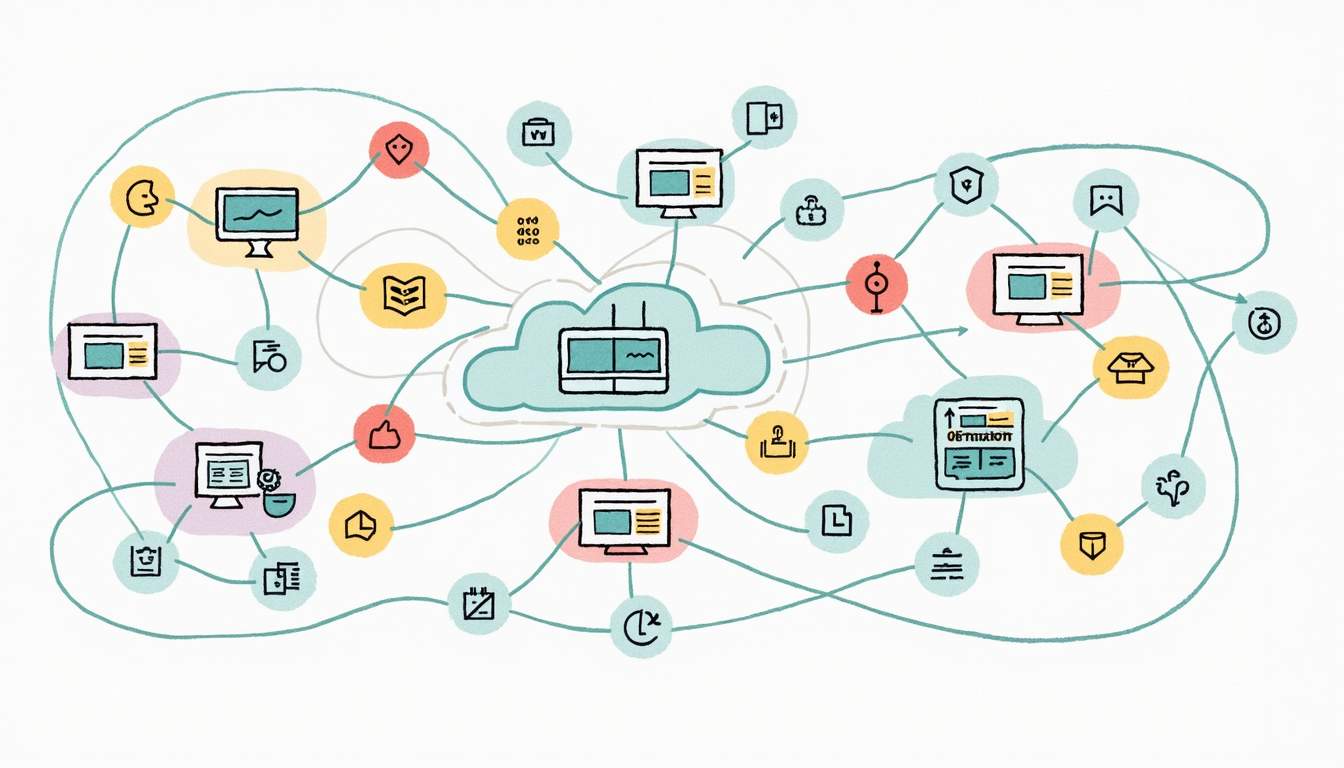Introduction to Cyber-Physical Systems (CPS)
Cyber-Physical Systems (CPS) represent a convergence of computational elements and physical processes. These systems are designed to interact with the physical world, integrating sensors, actuators, and computational resources to achieve sophisticated functionalities. As technology continues to evolve, the complexity of CPS increases, making it imperative to ensure their reliability, safety, and security.
The growing reliance on CPS in critical domains such as healthcare, transportation, and energy management raises significant concerns about trustworthiness. Stakeholders must be able to demonstrate that these systems can operate safely and reliably under various conditions. This is where assurance cases come into play.
Understanding Assurance Cases
An assurance case is a structured argument, supported by evidence, that a system meets specific requirements or standards. It provides a clear framework for articulating the rationale behind the trustworthiness of a CPS. By systematically presenting claims, arguments, and evidence, assurance cases help stakeholders understand how and why a system can be trusted.

Building an effective assurance case involves a comprehensive approach to identifying risks, assessing vulnerabilities, and demonstrating compliance with safety and security standards. This process not only enhances the credibility of the CPS but also fosters confidence among users and regulatory bodies.
The Structure of Assurance Cases
At its core, an assurance case consists of a claim, a set of arguments supporting that claim, and the evidence that substantiates those arguments. The claim is a high-level statement about the system’s trustworthiness, while the arguments provide a logical framework that connects the claim to the evidence.
For instance, a claim might state that a particular CPS is safe for use in a medical environment. Supporting arguments could include risk assessments, testing results, and compliance with relevant standards. The evidence could be detailed documentation of tests conducted, analyses performed, and certifications obtained.
Types of Evidence in Assurance Cases
Evidence plays a crucial role in the construction of assurance cases. Various types of evidence can be utilized, including:
- Empirical Evidence: Data obtained from testing and operational experiences.
- Theoretical Evidence: Analytical results derived from models and simulations.
- Expert Judgment: Insights and evaluations provided by subject matter experts.
Each type of evidence contributes to a more robust assurance case, providing multiple perspectives on the system’s performance and reliability. By combining different evidence types, stakeholders can create a more compelling argument for the trustworthiness of the CPS.
Challenges in Building Assurance Cases
While the concept of assurance cases is straightforward, the practicalities of building them can be quite challenging. Several factors complicate the assurance case development process, including the complexity of CPS, the dynamic nature of their environments, and the evolving threat landscape.
Moreover, the interdisciplinary nature of CPS means that assurance cases must integrate knowledge from various fields, including software engineering, systems engineering, and domain-specific expertise. This integration can be difficult, particularly when different stakeholders have varying priorities and perspectives on risk.
Complexity of Cyber-Physical Systems
The inherent complexity of CPS poses significant challenges in assurance case development. These systems often consist of numerous interconnected components, each with its own set of behaviors and interactions. Understanding how these components work together and how they might fail is critical for building a reliable assurance case.
Additionally, the dynamic environments in which CPS operate can introduce unforeseen variables that affect system performance. As a result, assurance cases must be continually updated and refined to account for changes in both the system and its operating environment.
Dynamic Threat Landscape
The threat landscape for CPS is constantly evolving, with new vulnerabilities and attack vectors emerging regularly. This dynamic nature makes it challenging to maintain an up-to-date assurance case. Stakeholders must be vigilant in monitoring potential threats and adapting their assurance cases accordingly.
Furthermore, the increasing sophistication of cyber-attacks necessitates a proactive approach to security. Assurance cases must not only demonstrate that a CPS is secure against known threats but also provide a rationale for how the system can adapt to emerging risks.
Frameworks and Methodologies for Assurance Cases
To address the challenges associated with building assurance cases, several frameworks and methodologies have been developed. These provide structured approaches for creating, maintaining, and evaluating assurance cases, ensuring that they are both comprehensive and coherent.
Common frameworks include the Goal Structuring Notation (GSN) and the Assurance Case Argumentation Framework (ACAF). Each of these frameworks offers unique benefits, allowing stakeholders to tailor their assurance case development process to their specific needs and contexts.
Goal Structuring Notation (GSN)
Goal Structuring Notation (GSN) is a widely used framework for constructing assurance cases. It provides a graphical representation of the relationships between claims, arguments, and evidence, making it easier to visualize and understand the structure of the assurance case.
GSN enables stakeholders to break down complex claims into smaller, manageable sub-claims, each supported by its own arguments and evidence. This hierarchical approach facilitates a thorough examination of the system’s trustworthiness and allows for more effective communication among stakeholders.
Assurance Case Argumentation Framework (ACAF)
The Assurance Case Argumentation Framework (ACAF) is another valuable tool for building assurance cases. ACAF emphasizes the importance of argumentation in the assurance case development process, focusing on the logical relationships between claims, arguments, and evidence.
By employing ACAF, stakeholders can systematically evaluate the strength of their arguments and identify any gaps in evidence. This framework encourages a critical assessment of the assurance case, ultimately leading to a more robust and convincing argument for the trustworthiness of the CPS.
Best Practices for Developing Assurance Cases
To create effective assurance cases, stakeholders should adhere to several best practices. These practices not only enhance the quality of the assurance case but also facilitate collaboration among diverse teams involved in the CPS development process.
First and foremost, early engagement with all relevant stakeholders is crucial. By involving various experts from the outset, teams can ensure that all perspectives are considered, leading to a more comprehensive assurance case. This collaborative approach also fosters a shared understanding of the system’s requirements and risks.
Iterative Development and Continuous Improvement
Assurance cases should not be static documents; they must evolve alongside the CPS. Adopting an iterative development approach allows teams to refine their assurance cases as new evidence becomes available or as the system undergoes changes. Regular reviews and updates ensure that the assurance case remains relevant and accurate.
Continuous improvement is also essential. Stakeholders should actively seek feedback on their assurance cases and incorporate lessons learned from past experiences. This iterative cycle of evaluation and enhancement contributes to the overall trustworthiness of the CPS.
Documentation and Traceability
Thorough documentation is a cornerstone of effective assurance cases. Every claim, argument, and piece of evidence should be meticulously recorded, ensuring that stakeholders can trace the rationale behind the assurance case. This traceability is vital for regulatory compliance and for building trust among users.
Additionally, clear documentation facilitates communication among team members and external stakeholders. It provides a shared reference point that can be consulted during discussions and decision-making processes, ultimately leading to more informed choices regarding the CPS.
Case Studies: Successful Assurance Cases in CPS
Examining real-world examples of successful assurance cases can provide valuable insights into best practices and effective methodologies. Several notable case studies illustrate how assurance cases have been successfully implemented in various CPS applications.

Healthcare Monitoring Systems
In the realm of healthcare, CPS are increasingly utilized for patient monitoring and management. One notable case involved the development of a remote patient monitoring system designed to track vital signs and alert healthcare providers in case of emergencies.
The assurance case for this system was built using GSN, clearly articulating claims about the system’s reliability and safety. Empirical evidence from extensive testing, combined with expert evaluations, supported the claims. This comprehensive assurance case not only satisfied regulatory requirements but also instilled confidence among healthcare providers and patients alike.
Autonomous Vehicles
Autonomous vehicles represent another domain where assurance cases are critical. As these vehicles must navigate complex environments and make real-time decisions, ensuring their safety is paramount. One case study involved the development of an assurance case for an autonomous driving system.
This assurance case incorporated a variety of evidence types, including simulation results, field tests, and compliance with industry standards. By employing ACAF, the development team was able to systematically evaluate the arguments supporting the safety claims, leading to a more robust assurance case that addressed potential risks effectively.
The Future of Assurance Cases in CPS
As CPS continue to evolve and permeate various sectors, the need for effective assurance cases will only grow. Emerging technologies such as artificial intelligence (AI) and machine learning (ML) introduce new challenges and opportunities for assurance case development.
These technologies can enhance the ability to analyze large datasets and identify potential risks, thereby improving the evidence base for assurance cases. However, they also introduce complexities that must be carefully managed to ensure the trustworthiness of the systems.
Integration of AI and ML in Assurance Cases
The integration of AI and ML into CPS presents unique challenges for assurance case development. As these systems learn and adapt over time, traditional assurance methods may need to be re-evaluated. Assurance cases must account for the dynamic nature of AI-driven systems, ensuring that they remain reliable and safe as they evolve.
Future assurance cases may leverage AI to automate aspects of evidence gathering and analysis, streamlining the development process. However, careful consideration must be given to the transparency and interpretability of AI algorithms to maintain trust in the system.
Regulatory Considerations and Standardization
The regulatory landscape for CPS is also evolving, with increasing emphasis on safety and security standards. As assurance cases become more integral to demonstrating compliance, stakeholders must stay informed about changes in regulations and industry standards.
Standardization of assurance case methodologies may emerge as a critical factor in ensuring consistency and reliability across different CPS applications. Collaborative efforts among industry stakeholders, regulatory bodies, and researchers will be essential in shaping the future of assurance cases in CPS.
Conclusion
Building assurance cases for trustworthy Cyber-Physical Systems is a multifaceted endeavor that requires careful consideration of evidence, argumentation, and stakeholder collaboration. As CPS become increasingly prevalent in critical areas, the need for robust assurance cases will only intensify.

By leveraging established frameworks, adhering to best practices, and staying attuned to emerging technologies and regulatory changes, stakeholders can create effective assurance cases that instill confidence in the safety and reliability of CPS. Ultimately, the goal is to ensure that these systems can be trusted to operate safely in the complex and dynamic environments in which they are deployed.
Take the Next Step Towards Assured Cyber-Physical System Safety
Understanding the intricacies of building assurance cases for Cyber-Physical Systems is just the beginning. With Cybersort, you can bring clarity to your digital infrastructure, ensuring safer operations and a solid foundation for your CPS’s trustworthiness. Don’t leave your system’s reliability to chance. Book a discovery call today and see how Cybersort can transform your approach to CPS safety and security.


